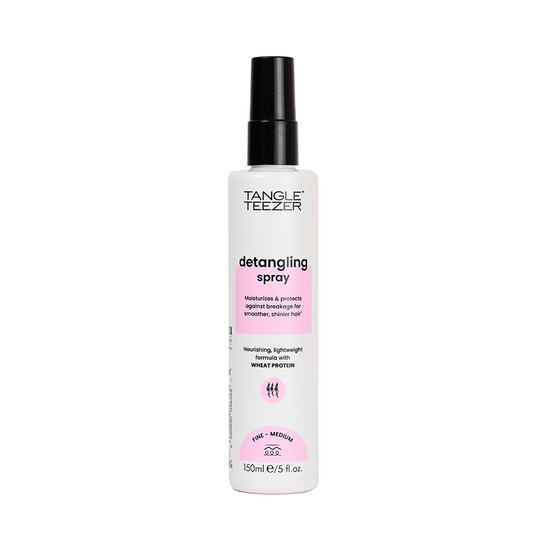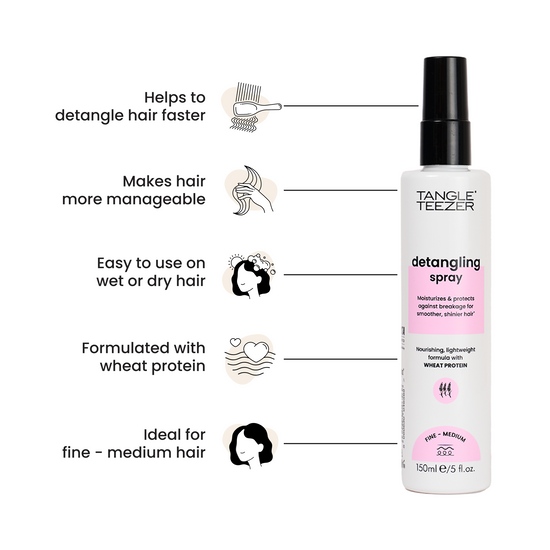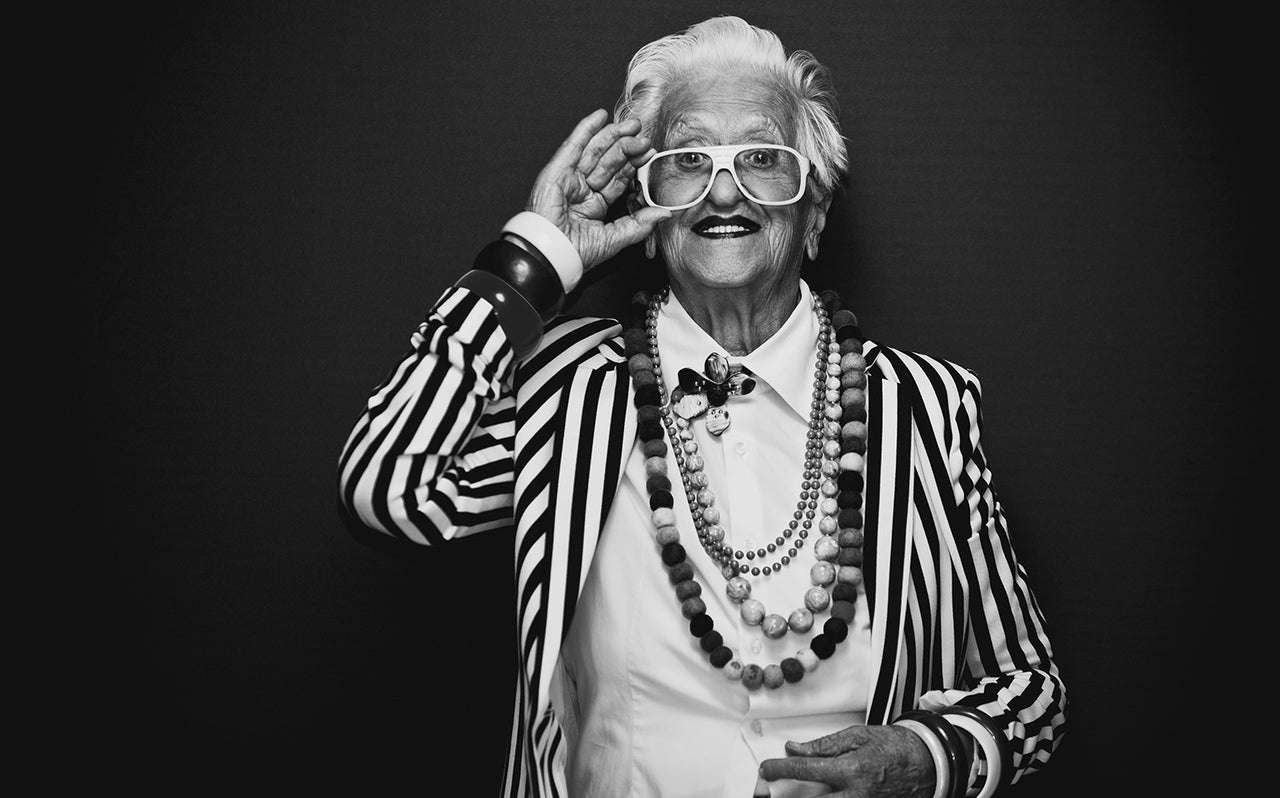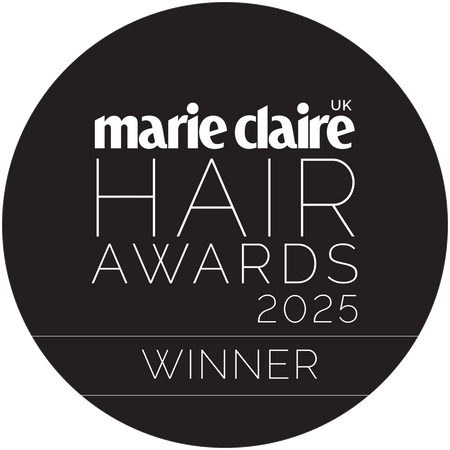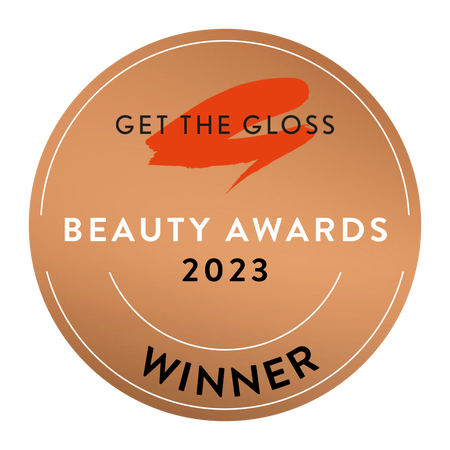There’s no denying that spotting that first grey hair is a moment to remember. No matter how hard we try to avoid it, ageing happens to everyone, and it’s only a matter of time before those pesky grey hairs start peeking through.

After years of colouring, bleaching, straightening, and general abuse, most women at some point in their adult lives will begin to experience the effects of ageing hair. Menopause can be a difficult time for women, especially when it comes to hair. In all honesty, there isn’t very much you can do about it – except embrace it! There are plenty of ways to make ageing hair more flattering without resorting to chopping it all off. Luckily for you, we’ve got the lowdown on the tips and techniques that will help to fight back against the hands of time with ease.

Credit @anna.the.grey
Why Does Our Hair Turn Grey?
While most of us are aware that our hair will eventually turn grey, the question remains – why? The short answer to this question is because our hair colour begins to fade as we age. This is the same for both men and women, regardless of the cause. Hair is mostly made of the protein keratin, which is also found in the skin and fingernails. While eumelanin is responsible for brown and black hair, phaeomelanin is in control of blond and ginger hair. During menopause, the body’s levels of these two proteins decrease; so less melanin is produced. The result? Less pigment in the hair and therefore a lighter colour!
Also, during the peri menopausal period, oestrogen can plummet while testosterone and androgens tend to rise, causing hair loss and thinning, particularly in the centre and forehead, as testosterone can weaken hair follicles. But, guess what! Nutritional support can amazingly help hormone changes and protect the hair.

Credit @myselfija
How Does Genetics Play a Role?
We should note that, while your hair may turn grey as you get older, this isn’t necessarily a sign that menopause is approaching. Hair colour, as well as the rate of which your hair turns grey, is largely dependent on your genetics. If your mum began to grey early in life, it’s likely you will as well. If you’ve noticed your hair beginning to go grey but there are no signs of menopause, it could be a result of a variety of factors including stress and poor diet.
The process of ageing and the environment we live in will also have an effect on the exact rate of hair greying. For example, if someone lives in a polluted city, they may notice greying sooner because the environment will have a higher amount of pollution, which is damaging to the hair. Another sneaky culprit of ageing hair could be the sun and its harsh UV rays, which impact the melanin in the hair as well.

Tips to Delaying and Protecting Grey Hair
As we mentioned before, ageing is inevitable. But there are several ways that could potentially slow down the process and protect the hair in advance.
Avoid Hot Showers
If you’ve been noticing your hair is starting to appear lighter than normal, the first thing you should do is alter your showering habits. Hot showers can damage the roots of your hair and can cause premature grey hair. Switching to cooler showers (but not cold!) will help to preserve the colour and condition of your hair, as well as saving you money on heating bills... Another reason to cool it with the water temperature is that it helps to avoid scalp damage, which can lead to hair loss. Hot water strips your hair and scalp of valuable oils, leading to dry, brittle hair that’s more likely to fall out. As we age, the skin and scalp naturally produce less oils. So, when someone is in the shower and starts scrubbing with a high-temperature setting, it's only going to dehydrate the hair even more.

Invest in a Quality Shampoo and Conditioner
We’ve all heard it a million times before – you get what you pay for. While this isn’t always the case, investing in a high-quality shampoo and conditioner will go a long way in protecting your hair from damage and premature greying. With such products, be sure to read the labels to ensure they’re specifically designed to fight against grey hair. The best shampoos and conditioners for your greying hair are those that are rich in proteins. This will help to strengthen and repair your hair so that it doesn’t break off as easily. Look for products with ingredients such as keratin, hydrolysed proteins, or peptides.
One of the main methods of slowing down the process of ageing hair is through circulation and blood flow. While you’re in the shower, using our Tangle Teezer’s Exfoliator and Scalp Massager can encourage hair growth by increasing the blood flow to the scalp. Give your scalp a little TLC and spend a few extra minutes in the shower massaging the shampoo thoroughly into your scalp.

Nutrient Intake and Staying Active
As with all aspects of life, diet plays a large role in how your hair ages. Keratin is a protein essential for hair health, and whilst it can’t be directly found in foods, it can be massively influenced by the amount of protein in our diet. If you’re not getting enough protein in your diet, your hair will be the first to suffer. Protein is essential for healthy and strong hair, as it’s responsible for forming hair follicles and repairing damaged hair. We’d suggest including fish, eggs, meat, poultry, beans and legumes into your diet, as well as nuts and grain products!
Trying to achieve hydrated hair? Fats are really important in the diet for hair hydration. We particularly need omega 3, found in fish, flax seeds and walnuts. Omega 6 is found in plant oils, which can help with hair. But be careful - an excess can lead to immune issues and a risk of inflammation, which can actually cause hair loss!

Credit @carole.rnt
Good old vitamins and minerals make the cut too! While vitamin A from sweet potatoes and red peppers increase the speed of hair cell regeneration, vitamin B9 (folate) transports oxygen to tissues and can stimulate the rebuilding of hair follicle cells, which can prevent hair loss and greying. Top sources of folate are: dark leafy green veg, peas, beans, beetroot, liver and cod. Other vitamins and minerals responsible for combatting hair include biotin, vitamin B5, niacin, cobalamin, silica, selenium, magnesium, and zinc.
We can’t forget about iron either! Iron is essential for creating melanin, the pigment that imparts hair with its colour. If you’re not getting enough iron in your diet, your body will begin to take it from other tissues, including your hair. Sources of iron are red meat, poultry, and smaller levels in beans, nuts, green leafy veggies, apricots and figs. Exercise is also important to keep your hair strong and healthy. It helps to promote blood flow to your scalp, which in turn delivers nutrients and oxygen to your hair follicles. It also helps to reduce stress, which can be another contributing factor to grey hairs.

Credit @virllylalune
While in perimenopause, calcium deficiency is common, so getting this mineral into your diet is so important, especially as it plays a role in hair health. Top sources are dairy products, dark green vegetables, soy, sardines, hazelnuts and walnuts, beans, figs, and fish.
Please note: it’s not just what we eat but what we don’t eat that can help. A diet high in sugar can be an indirect cause of hair loss. An increase in sugar can affect insulin, which in turn can raise androgens. Insulin can directly impact hair growth and circulation of the scalp. So, try swapping simple sugars and simple carbohydrates for complex carbohydrates, like vegetables, fruit and whole grains.

Credit @hi_ho_silver_liza
There’s no use trying to hold onto a youthful appearance forever – ageing happens to all of us at some point and it’s a privilege! Avoiding hot showers, eating a healthy diet, and taking care of your hair will go a long way in preserving your natural hair colour for as long as possible. But, the best thing you can do is embrace your new look and find ways to make it more flattering. There are plenty of ways to tame those pesky greys and make them look gorgeous, so there’s no need to fret!
